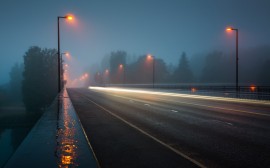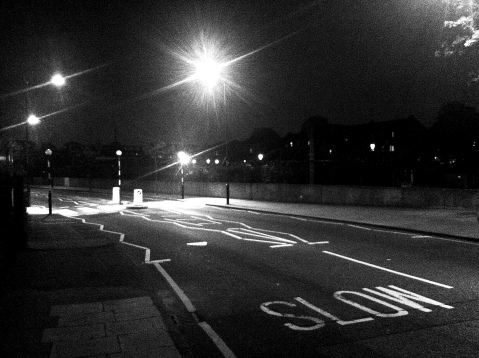D. Automobile and Pedestrian Accidents
“Sleep deprivation, whether from disorder or lifestyle, whether acute or chronic, poses significant cognitive risks in the performance of many ordinary tasks such as driving and operating machinery.” (418)—Jeffrey S. Durmer, M.D., Ph.D., Chief Medical Officer, Fusion Sleep, David F. Dinges, Ph.D., Professor of Psychology in Psychiatry, Associate Director, Center for Sleep and Circadian Neurobiology, University of Pennsylvania School of Medicine.
Psychomotor impairment due to sleep deprivation, as seen on tests like driving performance, can resemble that seen with blood alcohol levels between .05 and .10 percent. (219, 430, 431, Abaci, Take Charge of Your Chronic Pain: The Latest Research, Cutting-Edge Tools (Globe Pequot Press 2010) p. 241.)
“Both motor and mental acuity suffer when we are sleep deprived, which can lead to dangerous human errors and accidents. Studies done on test subjects with occupations associated with sleep deprivation—including pilots, truck drivers, and medical residents—typically show a greater risk for fatigue-related mistakes and crashes. Accidents related to lost lives and billions of dollars in costs.” (Abaci, supra, p. 241, n. omitted; see, e.g., n. 422.)
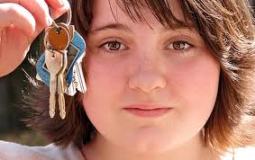 According to the CDC, “young people ages 15-24 represent only 14% of the U.S. population. However, they account for 30% ($19 billion) of the total costs of motor vehicle injuries among males and 28% ($7 billion) of the total costs of motor vehicle injuries among females. [T]he risk of motor vehicle crashes is higher among 16- to 19-year-olds than among any other age group.” (421) Per mile driven, teen drivers ages 16 to 19 are three times more likely than drivers aged 20 and older to be in a fatal crash. (419) Nationally, sleepiness is the leading cause of motor vehicle crashes among drivers 16 to 29 years of age. (21, 46, 429) Motor vehicle crashes represent the leading cause of death for U.S. teens, accounting for more than one in three deaths in this age group. (406, 421)
According to the CDC, “young people ages 15-24 represent only 14% of the U.S. population. However, they account for 30% ($19 billion) of the total costs of motor vehicle injuries among males and 28% ($7 billion) of the total costs of motor vehicle injuries among females. [T]he risk of motor vehicle crashes is higher among 16- to 19-year-olds than among any other age group.” (421) Per mile driven, teen drivers ages 16 to 19 are three times more likely than drivers aged 20 and older to be in a fatal crash. (419) Nationally, sleepiness is the leading cause of motor vehicle crashes among drivers 16 to 29 years of age. (21, 46, 429) Motor vehicle crashes represent the leading cause of death for U.S. teens, accounting for more than one in three deaths in this age group. (406, 421)
“[T]he driving skills and judgment of this group are not well polished, and the risk of continuing to drive while sleepy is hence exacerbated in younger drivers.” (Carskadon, Risks of Driving While Sleepy in Adolescents and Young Adults, publish. in, Adolescent Sleep Patterns: Biological, Social, and Psychological Influences (Carskadon, edit., Cambridge Univ. Press 2002) p. 149.) A 1990 study found boys with the greatest extracurricular time commitments most likely to report falling asleep at the wheel. (222) The subgroup at greatest risk “comprised the brightest, most energetic, hardest working teens.” (222)
“Teenagers, especially older teenage boys, are at the highest risk for falling asleep at the wheel. The most common drowsy driving accident involves a single vehicle with a single driver who drives off the road. 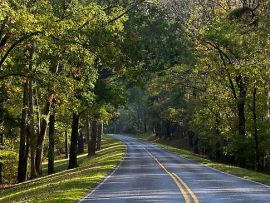 These accidents happen most often late at night and in the middle of the afternoon. So don’t be fooled that just because it is bright daylight, your teen won’t fall asleep at the wheel. In addition, all teens who are not getting enough sleep are at risk, especially when a beer or two, marijuana, and relative driving inexperience compound lack of sleep.” (Mindell & Owens, Clinical Guide to Pediatric Sleep: Diagnosis and Management of Sleep Problems (Lippincott Williams & Wilkins, 2nd ed. 2010) p. 258.)
These accidents happen most often late at night and in the middle of the afternoon. So don’t be fooled that just because it is bright daylight, your teen won’t fall asleep at the wheel. In addition, all teens who are not getting enough sleep are at risk, especially when a beer or two, marijuana, and relative driving inexperience compound lack of sleep.” (Mindell & Owens, Clinical Guide to Pediatric Sleep: Diagnosis and Management of Sleep Problems (Lippincott Williams & Wilkins, 2nd ed. 2010) p. 258.)
Early morning also appears to be a treacherous time for young drivers. “Many teenagers are behaviorally and physiologically not ready to fall asleep until 11:00 p.m. or later and are biologically programmed to be asleep when school begins. As a consequence, many students fall asleep in early morning classes, and they may also fall asleep behind the wheel driving to school.” (12) In 1995, Dr. Allan Pack, et al., examined crash records and found the peak age of sleep-related car crashes to be 20 years, and the peak time of accidents to be between 7 a.m. and 8 a.m. (427) A five year study by the Ohio Department of Transportation released in August of 2011 showed that 7 a.m. is “the most dangerous time for teens driving to school.” (428, 428.5)
Start Times & Adolescent Driving Safety
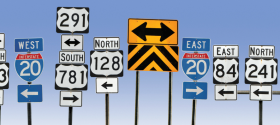 In 1999, school districts in Fayette County, Kentucky (Lexington metropolitan area), delayed start times for high school students county-wide by one hour to 8:30 a.m. (31) Average crash rates for 16-18 year olds in the study county in the 2 years after the change in school start time dropped 16.5%, compared with the 2 years prior to the change, whereas crash rates for 17-18 year olds increased 7.8% in the state over the same time period. (31) Researchers Fred Danner, Ph.D., and Barbara Phillips, M.D., concluded that “allowing adolescents to sleep more on school nights by delaying the start of school not only results in them sleeping more, but also may have a measurable positive effect on their driving safety.” (31) In reviewing the study, John Cline, Assistant Clinical Professor of Psychiatry at the Yale School of Medicine, commented, “Given the danger posed to young people from car accidents this is a strong reason in itself to change school start times.” (423)
In 1999, school districts in Fayette County, Kentucky (Lexington metropolitan area), delayed start times for high school students county-wide by one hour to 8:30 a.m. (31) Average crash rates for 16-18 year olds in the study county in the 2 years after the change in school start time dropped 16.5%, compared with the 2 years prior to the change, whereas crash rates for 17-18 year olds increased 7.8% in the state over the same time period. (31) Researchers Fred Danner, Ph.D., and Barbara Phillips, M.D., concluded that “allowing adolescents to sleep more on school nights by delaying the start of school not only results in them sleeping more, but also may have a measurable positive effect on their driving safety.” (31) In reviewing the study, John Cline, Assistant Clinical Professor of Psychiatry at the Yale School of Medicine, commented, “Given the danger posed to young people from car accidents this is a strong reason in itself to change school start times.” (423)
In 2010, scientists from the University of North Carolina Highway Safety Research Center challenged the Fayette County outcomes, however, as improperly excluding 16 year olds from one part of the analysis while including 18 year olds; i.e., individuals who may have graduated. (424) Thus, the North Carolina scientists undertook a “conceptual replication, using a more refined analytic approach that focused on 16- and 17-year-old driver crashes during times when school was in session.” (424) Beginning in August 2003, Forsyth County, North Carolina (2003 population = 317,430) delayed the start time by 75 minutes for all public high schools from 7:30 a.m. to 8:45 a.m. (424) Data were obtained from the North Carolina Crash Data System for crashes involving drivers ages 16 and 17 who held a North Carolina driver license from January 2000 through June 2007. (424)
Analyses were limited to crashes that occurred in Forsyth County and the three larger counties in North Carolina (Guilford, Mecklenburg and Wake). (424) During the study period, start times remained the same in Guilford (8:40 a.m.), Mecklenburg (7:15 a.m.), and generally steady in Wake County (mean 7:36 a.m. start time). (424) Aiming to rule out alternative explanations for the apparent beneficial effect on young driver crashes of delaying the high school start time, researchers excluded times when school was not in session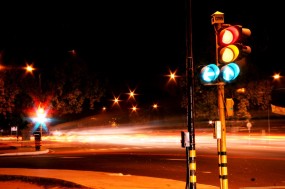 (i.e., weekends, summer time). (424) The study found a marginally, but statistically significant, decrease (14%) in standard crash rates for Forsyth County associated with the change in school start time. (424) Two of the three comparison counties — Mecklenburg and Wake — showed no evidence of any change; a shift in Guilford County of about the same percentage was not considered statistically significant. (424)
(i.e., weekends, summer time). (424) The study found a marginally, but statistically significant, decrease (14%) in standard crash rates for Forsyth County associated with the change in school start time. (424) Two of the three comparison counties — Mecklenburg and Wake — showed no evidence of any change; a shift in Guilford County of about the same percentage was not considered statistically significant. (424)
Re-analysis of crash data for Fayette County, Kentucky, showed no overall shift in crash rates. (424) The researchers attribute the difference to the inclusion of data for 16- and 17-year-olds only, the limitation to school day crashes only, and data limitations owing to the passage of time. (424)
A subsequent Virginia study, however, also excludes weekend and summer crash rates from its data set, narrowing its focus to school days. (46) Published in the April 2011 Journal of Clinical Sleep Medicine, the study found that in 2008, the teen crash rate was about 41% higher in Virginia Beach, Virginia, where high school classes began at 7:20—7:25 a.m., than in adjacent Chesapeake, Virginia, where classes started at 8:40—8:45 a.m. (315) Although a cause and effect relationship has not been established, the Virginia study also associates early start times with increased teenage car crash rates. (46, 315, 420)
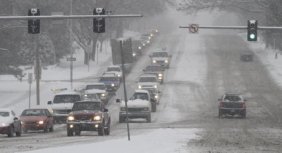 Similar results were found for 2007, when the weekday crash rate for Virginia Beach teens (71.2) was 28 percent higher than for Chesapeake teens (55.6). (46) In a secondary analysis that evaluated only the traditional school months of September 2007 through June 2008, the weekday crash rate for teen drivers was 25 percent higher in Virginia Beach (80.0) than in Chesapeake (64.0). (46) The morning peak in crash rates occurred one hour earlier in Virginia Beach than in Chesapeake. (46) The congestion data for Virginia Beach and Chesapeake did not explain the different crash rates. (46, 420) Robert Vorona, M.D., Associate Professor of Internal Medicine at Eastern Virginia Medical School in Norfolk, contends delaying high school start times may promote driver alertness by reducing the severity of chronic sleep restriction, a common problem during adolescence. (315)
Similar results were found for 2007, when the weekday crash rate for Virginia Beach teens (71.2) was 28 percent higher than for Chesapeake teens (55.6). (46) In a secondary analysis that evaluated only the traditional school months of September 2007 through June 2008, the weekday crash rate for teen drivers was 25 percent higher in Virginia Beach (80.0) than in Chesapeake (64.0). (46) The morning peak in crash rates occurred one hour earlier in Virginia Beach than in Chesapeake. (46) The congestion data for Virginia Beach and Chesapeake did not explain the different crash rates. (46, 420) Robert Vorona, M.D., Associate Professor of Internal Medicine at Eastern Virginia Medical School in Norfolk, contends delaying high school start times may promote driver alertness by reducing the severity of chronic sleep restriction, a common problem during adolescence. (315)
“We believe that high schools should take a close look at having later start times to align with circadian rhythms in teens and to allow for longer sleep times. Too many teens in this country obtain insufficient sleep. A burgeoning literature suggests that this may lead to problematic consequences including mood disorders, academic difficulties and behavioral issues.” (315)
Harvard Professor of Medicine Stuart Quan concurs. “They are additional data suggesting that high school start times should be delayed to increase the amount of sleep that teenagers get during the school week and, hence, reduce the amount of sleep deprivation they incur.” (344) In 2014, CAREI researchers utilized data obtained from the Wyoming Department of Transportation to assess the impact on crash rates for 16-18 year old drivers during the school year before and after a September 2012 start time delay (7:35 a.m. to 8:55 a.m.) at Jackson Hole High School. (309) While like the Kentucky study, supra, this study is arguably flawed for including adults who may have graduated, researchers nonetheless found the number of car crashes dropped from 23 to 7 for drivers 16 to 18 years of age, a 70% reduction. (309) In both years of study, the overwhelming majority of crashes occurred on weekdays; i.e., 21/23 = 91%; 6/7= 86%. (309) CAREI researchers surmise the fact that “over 66% of Jackson Hole High School students now obtain more than eight hours of sleep each school night may be the reason for the significant drop.” (309)
A 2013 Australian study of 19,327 newly licensed drivers ages 17-24 found that individuals reporting 6 or fewer hours of sleep per night were more likely to crash their vehicles than those who reported sleeping more than 6 hours. (432.5) In addition, less weekend sleep was significantly associated with an increased risk for run-off-road crashes. (432.5)
A second study of Virginia drivers published in 2014 compares car accident frequencies utilized data from the Virginia Department of Motor Vehicles for two adjacent counties, Chesterfield and Henrico, for the school years 2009-2010 and 2010-2011. (433) The counties are similar in socioeconomic and ethnic characteristics, and in the percentage of roads with traffic congestion. (433) However, the high school day begins at 8:45 a.m. in Henrico, and at 7:20 a.m. in Chesterfield. (433)
For the 2009-2010 academic year, the weekday rate of accidents among 16- to 18-year-old drivers in Chesterfield County was 48.8 per thousand, compared with 37.9 in Henrico County. (433) The following academic year (2010-2011) manifested the same trend, 51.9 per thousand in Chesterfield County and 44.2 per thousand in Henrico County. (433) The crash rate among adults over the same period fluctuated between 13 and 14 per thousand, with no difference between the two counties. (433)
 “Importantly, the significant differences in car crashes between counties with different school start times were observed for teen drivers only, not adults, further suggesting early start times could be an important potential contributor to preventable auto crashes in teens, which is a significant cause of premature death and morbidity in this population[.]” (433.5)
“Importantly, the significant differences in car crashes between counties with different school start times were observed for teen drivers only, not adults, further suggesting early start times could be an important potential contributor to preventable auto crashes in teens, which is a significant cause of premature death and morbidity in this population[.]” (433.5)
The study also reviewed police-reported crash causes that showed significantly more instances where teen drivers from Chesterfield ran off the road to the right – a common finding in crashes where inadequate sleep is suspected. While not statistically significant, similar trends were found for fatigue/fall asleep crashes and run-off crashes to the left. (433) Professor Vorona, again serving as lead author and principal investigator, observed:
“While a causal relationship between school start times and teen crash rates cannot be ascertained from aggregate data, replication of prior data and marked differences presently found suggest earlier high school start times may increase crashes in this vulnerable population.” (433)
RAND Corporation economists have determined that the reduction in car crashes associated with widespread implementation of later school scheduling would add billions of dollars to the U.S. economy. (50)
Sleep Restricted Adolescent Pedestrians
 Every year, over 8,000 adolescents ages 14-15 years require medical attention due to pedestrian injury. (434) A 2011 University of Alabama at Birmingham study found that while acutely sleep restricted (<4 hours), adolescents in this age group took more time in a virtual environment to initiate pedestrian crossings, crossed with less time before contact with vehicles, experienced more virtual hits or close calls, and looked left and right more often compared with when adequately rested. (434, 435)
Every year, over 8,000 adolescents ages 14-15 years require medical attention due to pedestrian injury. (434) A 2011 University of Alabama at Birmingham study found that while acutely sleep restricted (<4 hours), adolescents in this age group took more time in a virtual environment to initiate pedestrian crossings, crossed with less time before contact with vehicles, experienced more virtual hits or close calls, and looked left and right more often compared with when adequately rested. (434, 435)
Safe pedestrian behavior requires several aspects of cognitive function. First, safe pedestrian behavior requires impulse control; sleep-restricted adolescents made risky decisions by crossing in potentially dangerous traffic gaps. (434) Second, safe pedestrian behavior requires efficient, rapid, and precise decision making decision making; a pedestrian must perceive and judge the safety of a traffic gap quickly and then initiate movement into it. (434) As measured by the start delay variable, adolescents who were tired also performed poorly at quickly initiating the crossing when a safe opportunity was present. (434) Third, safe pedestrian behavior requires attention to oncoming traffic. (434)
“It appears that the tired adolescents looked more frequently at traffic but made risky and poor decisions, yielding more risky behavior overall when acutely sleep restricted. Adolescents may have increased their looking at traffic while acutely sleep restricted as a means of compensation. They may have recognized their deficient processing and tried to compensate by looking more frequently at the pedestrian environment. Simply looking at the environment does not translate into safer pedestrian behavior, however, because a safe pedestrian must not only perceive the environment, but also process the perceived information and decide how to act. Given these findings on the cognitive and decision-making aspects of pedestrian behavior that were measured, it appears the acutely sleep-restricted adolescents demonstrated poor cognitive processing and decision making about the pedestrian environment even though they looked back and forth more frequently. [¶¶] (434)
”[T]his information could educate policy decisions about school start times. Changes in the circadian rhythms of adolescents cause many teens to fall asleep later, and early school start times prevent them from achieving adequate amounts of sleep. Previous work suggests that … later school start times are associated with longer sleep duration in adolescents. Our findings offer initial data of another benefit that might arise from later school start times: reduced pedestrian injury risk among adolescents walking to and from school.” (434)

